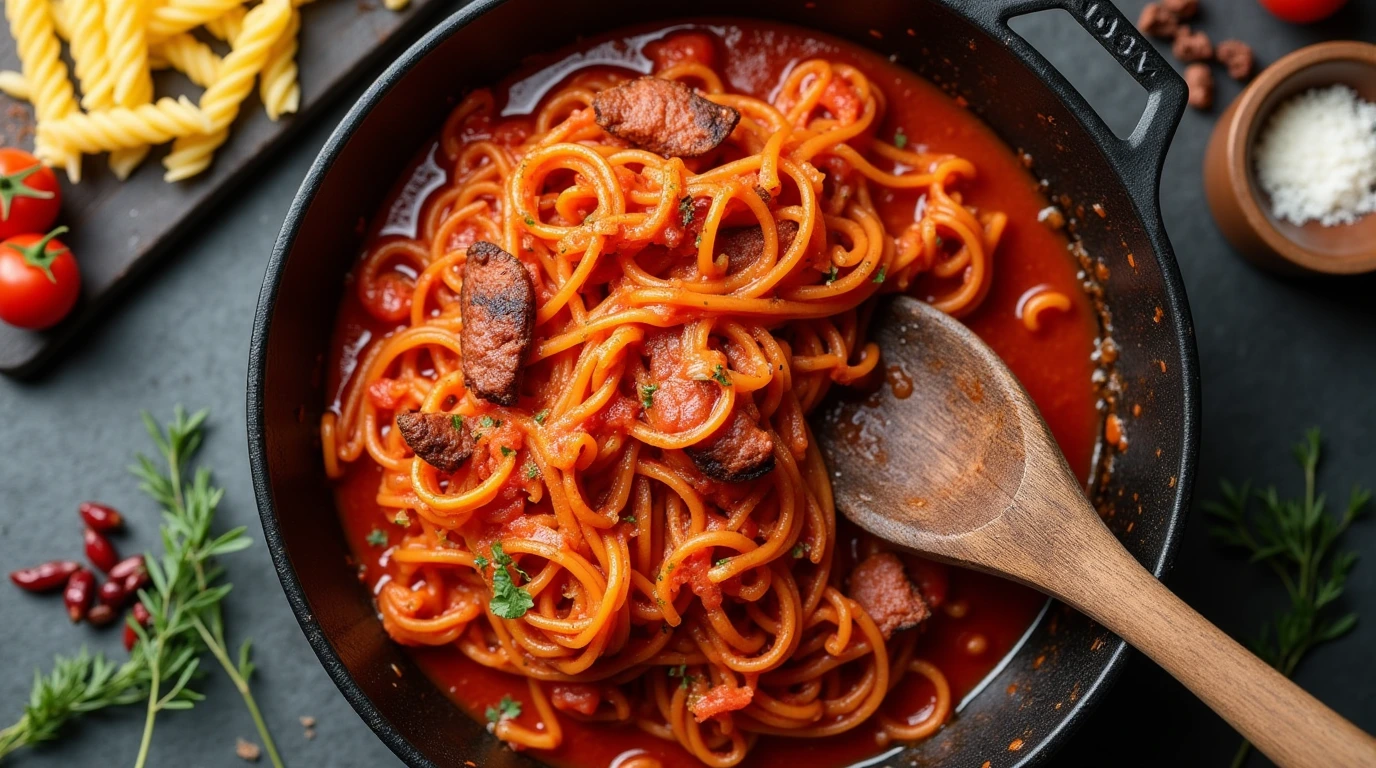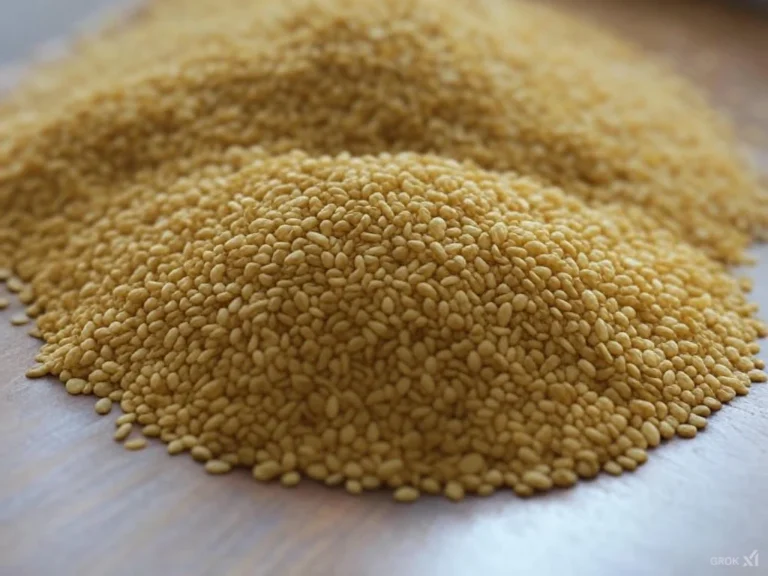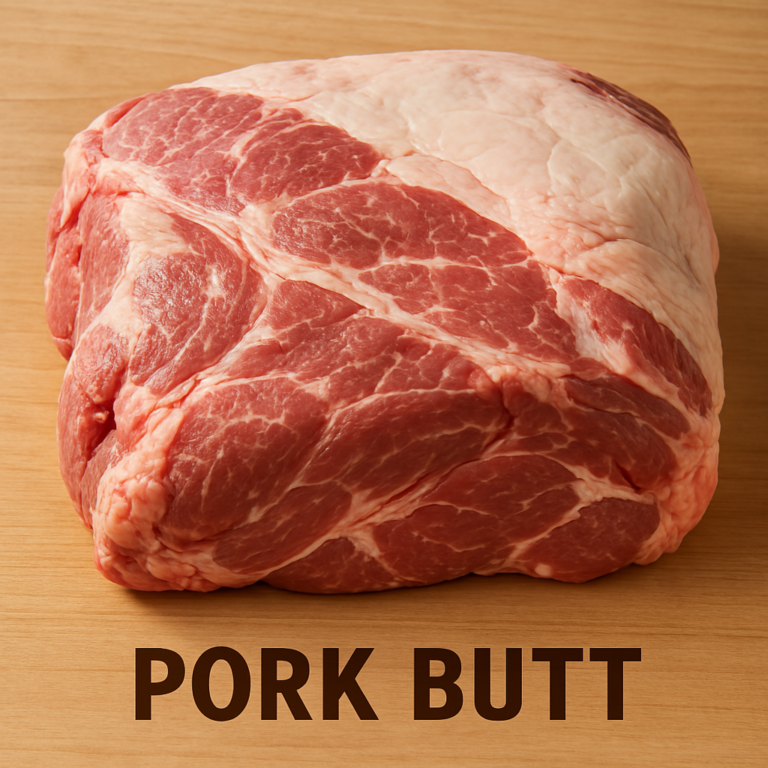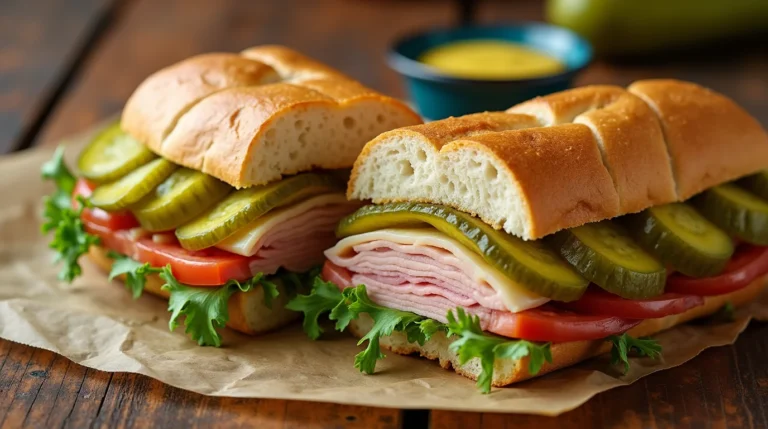Pasta all’Amatriciana & Guanciale: Sensational Rustic Feast5
Guanciale
Pasta all’Amatriciana (or pasta alla matriciana) is a cornerstone of Roman cuisine with origins in the town of Amatrice. This bold, rustic pasta dish perfectly balances the richness of guanciale (cured pork jowl) with the acidity of tomatoes and the saltiness of pecorino cheese.
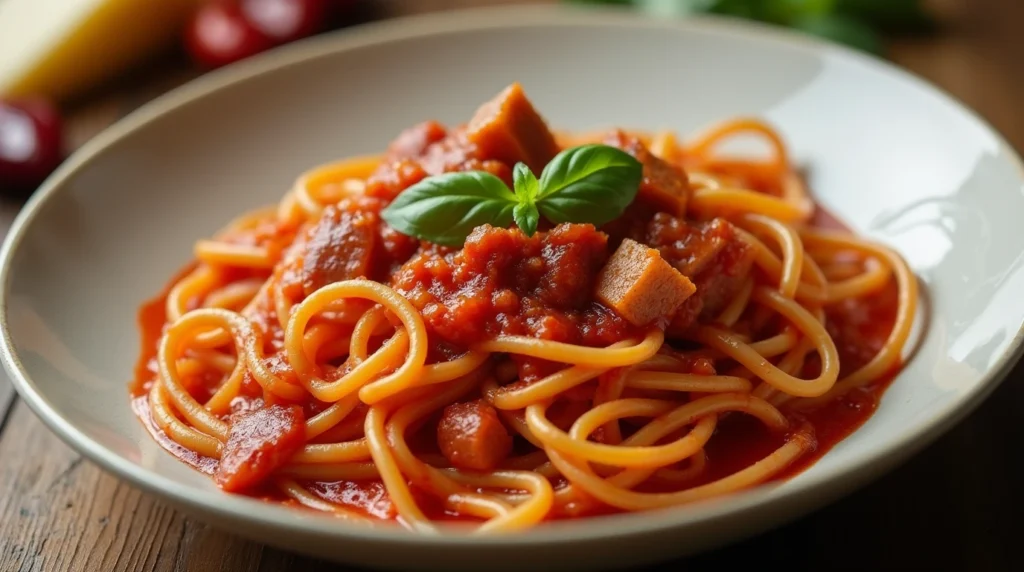
The guanciale is the star here – rendering its flavorful fat that creates the foundation of the sauce. Unlike many Italian-American interpretations, authentic Amatriciana contains no garlic and traditionally doesn’t include onions (though some Roman variations do). The sauce clings beautifully to bucatini, a thick spaghetti-like pasta with a hole running through its center, though rigatoni or regular spaghetti work wonderfully too.
The result is a deceptively simple yet deeply satisfying dish that represents the essence of central Italian cooking – allowing a few high-quality ingredients to shine through minimal intervention. The interplay between the crispy, melting guanciale, the bright tomatoes, and the sharp, salty pecorino creates a perfect harmony of flavors that has made this dish beloved throughout Italy and around the world.
Dating back several centuries, this treasured recipe showcases how Italian cuisine transforms humble ingredients into something truly magnificent through careful technique and respect for tradition.
📌 Number of Servings: 4
⏳ Preparation Time: 15 minutes
🔥 Cooking Time: 40 minutes
🥢 Ingredients :
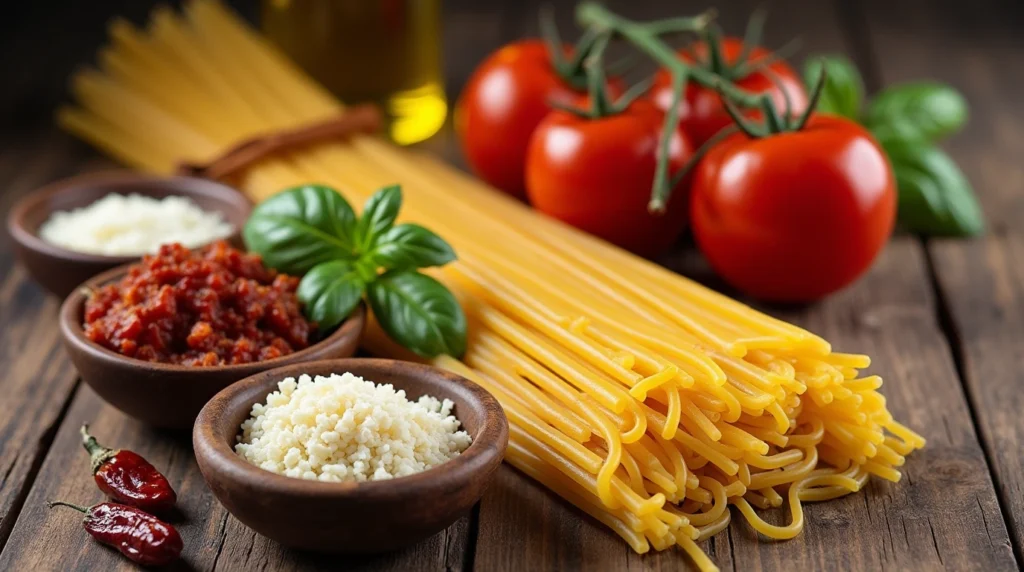
✅ 150g (5.3 oz) guanciale, cut into small strips or cubes (about ¼ inch thick)
✅ 400g (14 oz) bucatini, spaghetti, or rigatoni
✅ 800g (28 oz) whole peeled San Marzano tomatoes, crushed by hand
✅ 75g (2.6 oz) pecorino Romano cheese, freshly grated (plus more for serving)
✅ 1-2 dried red chili peppers or 1 tsp red pepper flakes (peperoncino)
✅ ½ small onion, finely diced (optional – traditional purists omit this)
✅ 1 tbsp extra virgin olive oil (only if needed)
✅ Salt to taste (be careful as both guanciale and pecorino are salty)
👨🍳 Instructions :
- Start by heating a generous amount of water in a large pot until it reaches a rolling boil—this will be for cooking the pasta. When boiling, add salt (less than usual as the sauce ingredients are quite salty).
- Cut the guanciale into small strips or cubes, removing the pepper coating if desired but keeping some of the fat attached.
- In a large, heavy skillet over medium-low heat, cook the guanciale slowly until the fat renders and the meat becomes crispy and golden, about 8-10 minutes. No additional oil is needed as the guanciale will release plenty of fat.
- If using onion (note this is a variation), add it to the rendered fat and sauté until translucent, about 3-4 minutes.
- Add the crushed red pepper to the pan and toast briefly, about 30 seconds.
- Add the hand-crushed tomatoes to the pan. Simmer the sauce for about 15 minutes, stirring occasionally, until it thickens and the flavors meld.
- Meanwhile, cook the pasta in the boiling water until just shy of al dente (about 2 minutes less than package instructions).
- Before you drain the pasta, scoop out roughly a cup of the starchy cooking water and set it aside—it can help bring your sauce together later.
- Add the drained pasta directly to the sauce in the skillet along with a splash (about ¼ cup) of the reserved cooking water. Toss vigorously over medium heat until the pasta is well-coated and finishes cooking, about 1-2 minutes.
- Remove the pan from heat and stir in the grated pecorino Romano cheese. If the sauce seems too thick, add a little more pasta water to create a silky consistency.
- Serve immediately with additional grated pecorino on the side.
💡 TIPS :
- Guanciale substitution: While authentic Amatriciana requires guanciale, pancetta can be used as a substitute if guanciale is unavailable. Bacon is a last resort and will significantly change the flavor profile.
- Cheese matters: Use only genuine Pecorino Romano, not Parmigiano Reggiano, for authentic flavor.
- Tomato selection: San Marzano tomatoes provide the best flavor, but good quality canned whole tomatoes will work.
- No garlic: Traditional Amatriciana does not include garlic.
- Control the heat: Adjust the amount of chili pepper to your taste preference.
- Fat management: If the rendered fat seems excessive, you can remove some, but keep enough to coat the pasta.
- Pasta choice: Bucatini is traditional, but spaghetti, rigatoni, or other short pasta works well too.
📊Nutrition Information (per serving)
- Calories: 595
- Total Fat: 23g
- Saturated Fat: 8g
- Cholesterol: 35mg
- Sodium: 890mg
- Total Carbohydrate: 72g
- Dietary Fiber: 4g
- Sugars: 8g
- Protein: 22g
❓ FAQ :
- What is guanciale and where can I find it? Guanciale is cured pork jowl or cheek, seasoned with salt and pepper or other spices. It can be found in Italian specialty stores, gourmet markets, or ordered online from specialty food retailers.
- Can I substitute bacon for guanciale? While bacon can be used as a last resort, it will significantly alter the traditional flavor due to its smoky taste. Pancetta is a better substitute if guanciale is unavailable.
- Is it traditional to add onions to Amatriciana sauce? Purists from Amatrice don’t use onions, while many Roman variations do include them. Both versions are considered acceptable, though the most traditional recipe omits them.
- Why is my Amatriciana sauce too watery? This usually happens if the tomatoes weren’t cooked long enough to reduce and concentrate their flavors. Simmer the sauce longer until it reaches your desired consistency.
- Can I make Amatriciana sauce ahead of time? Yes, the sauce can be made 1-2 days ahead and refrigerated. Reheat gently and cook with fresh pasta when ready to serve.
- Is it okay to add garlic to Amatriciana? Traditional Amatriciana does not include garlic. While you can add it for personal preference, it would no longer be considered authentic.
- Why did my cheese clump instead of creating a creamy sauce? Adding cheese when the pasta is too hot can cause clumping. Remove the pan from heat before adding cheese and ensure you’re using finely grated cheese.
- What wine pairs well with Pasta all’Amatriciana? A medium-bodied red wine with good acidity such as a young Montepulciano d’Abruzzo or a Sangiovese works beautifully with this dish.
- Can I make a vegetarian version of Amatriciana? While you can make a tomato-based pasta without the guanciale, it would no longer be Amatriciana, as guanciale is the defining ingredient of this dish.
- Why is my guanciale tough instead of crispy? This can happen if the heat is too high. Cook guanciale slowly over medium-low heat to properly render the fat and achieve a crispy-yet-tender texture.
Related


